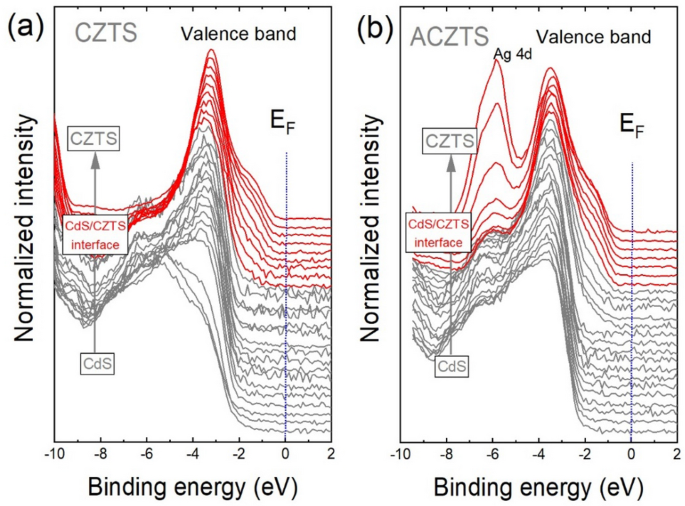

Highly efficient Cu(In,Ga) Se2 solar cells grown on flexible polymer films. Technological aspects of flexible CIGS solar cells and modules. Review of progress toward 20% efficiency flexible CIGS solar cells and manufacturing issues of solar modules. Organic photovoltaic cells: History, principle and techniques. Photovoltaic manufacturing: Present status, future prospects, and research needs. on Photovoltaic Solar Energy Conversion 477–481 (Joint Research Centre, European Commission, 1998). The preparation of Cu2S films for solar cells. Two-step K +–Na + and Ag +–Na + ion-exchanged glass waveguides for C-band applications. Cation exchange on the nanoscale: An emerging technique for new materials synthesis, device fabrication, and chemical sensing. Role of ion exchange in solid-state chemistry. Studies on the mechanism of ionic exchange in colloidal aluminium silicates. Optimization of CBD CdS process in high-efficiency Cu(In,Ga) Se2-based solar cells. Growth of Cu(In,Ga) Se2 thin films by coevaporation using alkaline precursors. New world record efficiency for Cu(In,Ga) Se2 thin-film solar cells beyond 20%. Solar cell efficiency tables (version 41). Ion exchange processes, well known in other research areas 7, 8, 9, 10, 11, 12, 13, are proposed as underlying mechanisms responsible for the changes in chemical composition of the deposited CIGS layer and interface properties of the heterojunction. The described treatment leads to a significant depletion of Cu and Ga concentrations in the CIGS near-surface region and enables a significant thickness reduction of the CdS buffer layer without the commonly observed losses in photovoltaic parameters 6. Here we present a new sequential post-deposition treatment of the CIGS layer with sodium and potassium fluoride that enables fabrication of flexible photovoltaic devices with a remarkable conversion efficiency due to modified interface properties and mitigation of optical losses in the CdS buffer layer. The use of flexible substrates requires distinct incorporation of the alkaline metals, and so far mainly Na was believed to be the most favourable element, whereas other alkaline metals have resulted in significantly inferior device performance 4, 5. This high performance level requires a small amount of alkaline metals incorporated into the CIGS layer, naturally provided by soda lime glass substrates used for processing of champion devices 3. From non-stick cookware coatings to thin-film electronics and bio-active surfaces, XPS is the standard tool for surface material characterization.Thin-film photovoltaic devices based on chalcopyrite Cu(In,Ga)Se 2 (CIGS) absorber layers show excellent light-to-power conversion efficiencies exceeding 20% (refs 1, 2). XPS can be used to analyze the surface chemistry of a material after an applied treatment such as fracturing, cutting or scraping. Therefore, surface modification can be used in a wide variety of applications to alter or improve the performance and behavior of a material. The material’s surface is the point of interaction with the external environment and other materials. The surface chemistry will influence such factors as corrosion rates, catalytic activity, adhesive properties, wettability, contact potential and failure mechanisms. Many of the problems associated with modern materials can be solved only by understanding the physical and chemical interactions that occur at the surface or at the interfaces of a material’s layers. The energies and intensities of the photoelectron peaks enable identification and quantification of all surface elements (except hydrogen).Īs the demand for high performance materials increases, so does the importance of surface engineering. Peaks appear in the spectrum from atoms emitting electrons of a particular characteristic energy. A photoelectron spectrum is recorded by counting ejected electrons over a range of electron kinetic energies. XPS spectra are obtained by irradiating a solid surface with a beam of X-rays while simultaneously measuring the kinetic energy and electrons that are emitted from the top 1-10 nm of the material being analyzed. XPS can measure the elemental composition, empirical formula, chemical state and electronic state of the elements within a material. X-ray photoelectron spectroscopy (XPS) is a technique for analyzing the surface chemistry of a material.


 0 kommentar(er)
0 kommentar(er)
